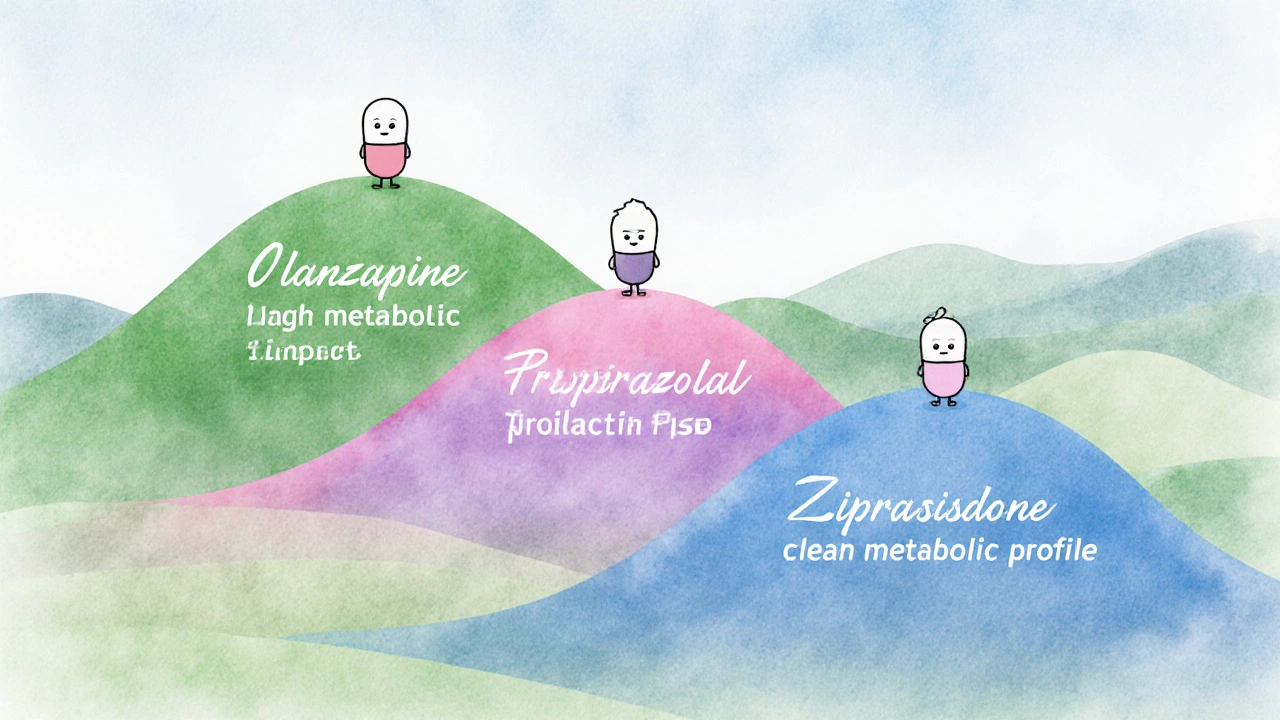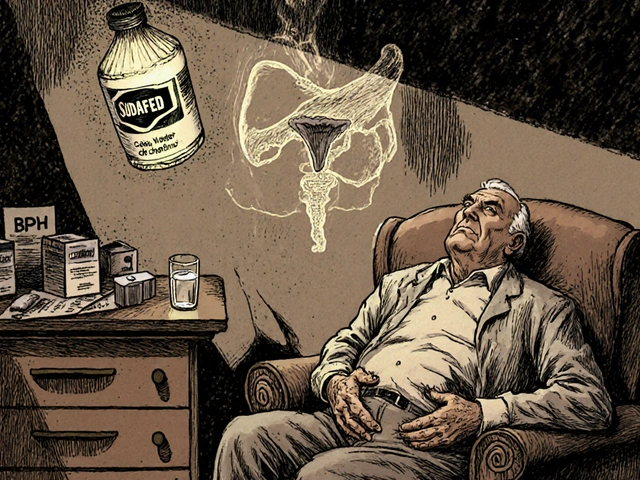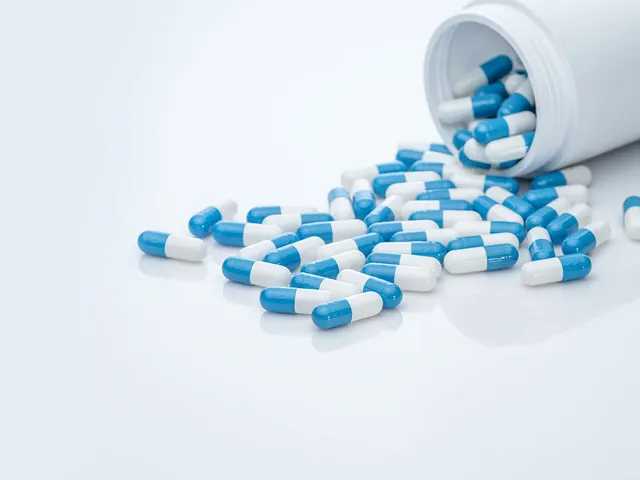Antipsychotic Comparison Tool
Select an antipsychotic below to compare its key attributes and side effects.
Risperdal
Risperidone - Second-generation antipsychotic
Abilify
Aripiprazole - Partial dopamine agonist
Zyprexa
Olanzapine - Potent antipsychotic
Seroquel
Quetiapine - Mood stabilizer
Geodon
Ziprasidone - Metabolic friendly
Latuda
Lurasidone - Low weight gain
Selected Medication Details
Select an antipsychotic from above to see detailed comparison.
Decision Factors Checklist
- 1 Primary symptom focus: Is psychosis the main issue, or do you also need mood stabilization?
- 2 Metabolic health: Do you have diabetes, high cholesterol, or a tendency to gain weight?
- 3 Prolactin concerns: Are menstrual irregularities or sexual side effects a red flag?
- 4 Cardiac history: Any past arrhythmias or family history of QT problems?
- 5 Adherence factors: Can you swallow pills daily, or would a once-daily regimen help?
- 6 Cost & insurance: Verify PBS listings and private health cover for each option.
Choosing the right antipsychotic can feel like walking through a maze of brand names, side‑effect warnings, and dosing tables. If you or a loved one have been prescribed Risperdal - the market name for risperidone - you probably wonder how it stacks up against other options on the shelf.
Key Takeaways
- Risperdal is effective for schizophrenia and bipolar mania, but it can raise prolactin levels and cause weight gain.
- Aripiprazole (Abilify) offers a lower risk of metabolic side effects and can be used as a partial agonist.
- Olanzapine (Zyprexa) is highly potent but carries the highest weight‑gain and diabetes risk.
- Quetiapine (Seroquel) works well for mood stabilization and sleep, yet sedation is common.
- Ziprasidone (Geodon) has a favorable metabolic profile but requires strict dosing with food.
Understanding Risperdal: Core Attributes
Risperdal belongs to the second‑generation, or atypical, antipsychotic class. Its primary mechanism is dopamine D2 and serotonin 5‑HT2A receptor antagonism, which helps balance neurotransmission in patients with schizophrenia, schizoaffective disorder, or acute manic episodes.
Typical daily dose ranges from 1mg to 8mg for adults, depending on severity and previous treatment response. The drug’s half‑life averages 3hours for the parent compound and 20hours for its active metabolite, 9‑hydroxy‑risperidone, allowing once‑daily dosing in most cases.
Common side effects include:
- Elevated prolactin (possible galactorrhea, menstrual irregularities)
- Weight gain (average 2-4kg in the first few months)
- Extrapyramidal symptoms (EP), especially at higher doses
- Somnolence and dizziness
In Australia, the average retail cost for a 30‑day supply of Risperdal 2mg tablets hovers around AU$45, though bulk or generic versions can bring that down to roughly AU$30.
Major Alternatives: Quick Profiles
Below are brief snapshots of the most frequently considered alternatives, each introduced with schema markup for easy knowledge‑graph extraction.
Abilify - generic name aripiprazole - is a partial dopamine agonist that tends to cause less weight gain and a lower prolactin surge.
Zyprexa - generic name olanzapine - is known for strong symptom control but a high metabolic impact.
Seroquel - generic name quetiapine - offers mood‑stabilizing benefits and is often prescribed for sleep, but sedation is common.
Geodon - generic name ziprasidone - has a relatively clean metabolic profile, though it must be taken with a full meal.
Latuda - generic name lurasidone - is another low‑weight‑gain option, approved for bipolar depression and schizophrenia.

Side‑Effect Landscape Across the Board
Side‑effects often dictate which drug patients can tolerate long‑term. Here’s a distilled comparison:
- Metabolic impact: Olanzapine > Risperdal > Quetiapine > Aripiprazole ≈ Ziprasidone ≈ Lurasidone.
- Prolactin elevation: Risperdal and Olanzapine are highest; Aripiprazole actually lowers prolactin.
- Extrapyramidal symptoms: Risperdal and Haloperidol (typical) rank higher; Quetiapine and Ziprasidone are lower.
- Cardiac concerns: Ziprasidone and Lurasidone carry QT‑prolongation warnings, requiring ECG monitoring for at‑risk patients.
Cost Snapshot (Australian Retail Approx.)
Affordability can be a deal‑breaker, especially when insurance coverage varies.
| Brand | Generic | Typical Daily Dose | Half‑Life (hrs) | Common Side Effects | Monthly Cost |
|---|---|---|---|---|---|
| Risperdal | Risperidone | 2-6mg | 3 / 20 (metabolite) | Prolactin ↑, weight gain | AU$30-45 |
| Abilify | Aripiprazole | 10-30mg | 75 | Akathisia, insomnia | AU$70-110 |
| Zyprexa | Olanzapine | 5-20mg | 30 | Weight gain, metabolic syndrome | AU$55-95 |
| Seroquel | Quetiapine | 150-800mg | 6 | Sedation, orthostatic hypotension | AU$40-80 |
| Geodon | Ziprasidone | 20-80mg | 7 | QT prolongation, nausea | AU$65-100 |
| Latuda | Lurasidone | 20-80mg | 18 | Akathisia, nausea | AU$80-120 |
How to Decide: Decision‑Making Checklist
Use this quick checklist when you sit down with your psychiatrist or pharmacist.
- Primary symptom focus: Is psychosis the main issue, or do you also need mood stabilization?
- Metabolic health: Do you have diabetes, high cholesterol, or a tendency to gain weight?
- Prolactin concerns: Are menstrual irregularities or sexual side effects a red flag?
- Cardiac history: Any past arrhythmias or family history of QT problems?
- Adherence factors: Can you swallow pills daily, or would a once‑daily regimen help?
- Cost & insurance: Verify PBS listings and private health cover for each option.
Answering these questions narrows the field dramatically and lets your provider match the drug’s profile to your personal health picture.

Real‑World Scenarios
Scenario 1 - Young adult with first‑episode psychosis: The clinician may start with a low dose of Risperdal (1mg) to gauge response, then switch to Aripiprazole if prolactin rise becomes an issue.
Scenario 2 - Middle‑aged patient with longstanding schizophrenia and metabolic syndrome: Olanzapine’s potency is attractive, but the risk to glucose control is high. Ziprasidone or Lurasidone becomes a safer bet, provided meals are regular.
Scenario 3 - Bipolar depression with sleep disturbances: Quetiapine’s sedative effect helps both mood and insomnia, yet daytime drowsiness may affect work. A split‑dose strategy (nighttime only) can mitigate this.
Potential Pitfalls and How to Avoid Them
- Skipping blood work: Regular fasting glucose and lipid panels catch early metabolic shifts, especially with Olanzapine and Risperdal.
- Ignoring drug‑food interactions: Ziprasidone must be taken with at least 500kcal; missing a meal drops blood levels and can cause relapse.
- Sudden discontinuation: Abruptly stopping any antipsychotic may trigger rebound psychosis. Taper gradually under medical supervision.
- Over‑reliance on brand names: Generic equivalents are bio‑equivalent and often cheaper; always ask the pharmacist.
Frequently Asked Questions
Can I switch from Risperdal to another antipsychotic without a washout period?
Most clinicians cross‑tap the new medication while gradually tapering Risperdal over 1-2weeks. A strict washout isn’t needed, but monitoring for symptom rebound is essential.
Why does Risperdal raise prolactin while Aripiprazole lowers it?
Risperdal blocks dopamine D2 receptors in the pituitary gland, removing the inhibition on prolactin release. Aripiprazole, as a partial agonist, provides enough dopamine tone to keep prolactin in check.
Is it safe to take Risperdal during pregnancy?
Category C - animal studies show risk, but human data are limited. If benefits outweigh risks, a clinician may continue, preferably at the lowest effective dose.
How does the cost of generic risperidone compare to brand‑name Risperdal?
Generic risperidone typically costs 30‑40% less than the brand version, bringing a 30‑day supply from about AU$45 down to AU$25‑30 in most pharmacies.
What should I do if I experience severe weight gain on Risperdal?
Report it promptly. Your doctor may switch to a lower‑weight‑gain option like Aripiprazole or Lurasidone, and will likely add a lifestyle plan or metabolic monitoring.
Next Steps for Patients and Caregivers
1. Gather your recent lab results (glucose, lipids, ECG) and bring them to the appointment.
2. Write down current symptoms - both psychotic and side‑effect related - to help the clinician prioritize.
3. Discuss cost concerns early; ask the pharmacist about PBS listings, generic availability, and any bulk‑purchase programs.
4. Plan a follow‑up schedule - typically every 4‑6weeks after a medication change - to fine‑tune dose and catch early side effects.
Armed with this comparison, you can have a focused conversation that balances efficacy, safety, and budget. The right choice isn’t always the newest brand; it’s the one that fits your unique health picture.







Dipak Pawar
When navigating the pharmacological landscape of atypical antipsychotics, it is essential to integrate both the mechanistic pharmacodynamics and the sociocultural determinants of adherence; the interplay between dopamine D2 antagonism and serotonin 5‑HT2A modulation underpins risperidone’s efficacy across psychotic spectra. Moreover, the active metabolite 9‑hydroxy‑risperidone extends the therapeutic window, enabling once‑daily dosing while preserving plasma stability. From a metabolic standpoint, the drug’s intermediate propensity for weight gain situates it between olanzapine’s pronounced adipogenic profile and aripiprazole’s comparatively neutral impact, a nuance that must be communicated to patients with pre‑existing insulin resistance. Prolactin elevation, mediated via pituitary D2 blockade, remains a salient adverse effect, especially pertinent for female patients of reproductive age, necessitating periodic endocrine monitoring. In terms of therapeutic index, risperidone offers a favorable balance, with a dose‑response curve that mitigates extrapyramidal symptoms at lower titrations, yet escalates EPS risk as doses surpass the 6 mg threshold-a pharmacokinetic detail often overlooked in primary care settings. Cultural considerations further modulate drug selection; for instance, in regions where stigma surrounding psychiatric medication is prevalent, prescribing a once‑daily regimen that aligns with patients’ daily routines can enhance adherence and reduce perceived burden. Additionally, the availability of generic formulations substantially lowers fiscal barriers, aligning with health‑economics strategies aimed at reducing out‑of‑pocket expenditures for low‑income cohorts. Clinical guidelines also recommend cross‑titration protocols when transitioning from high‑prolactin agents to prolactin‑sparing alternatives, a process that benefits from clear patient education and shared decision‑making frameworks. Ultimately, the choice between risperidone and its contemporaries should be predicated upon a composite assessment of symptomatology, metabolic history, reproductive considerations, and socioeconomic context, thereby ensuring a patient‑centric, evidence‑based therapeutic pathway.
Jonathan Alvarenga
Frankly, the so‑called “comprehensive” comparison feels like a marketing brochure padded with jargon, offering little pragmatic guidance for clinicians who must wrestle with insurance formularies and real‑world side‑effect tolerability. The cost breakdown, while numerically accurate, ignores bulk‑purchase discounts and private‑label alternatives that can shave tens of dollars off a month’s supply, rendering the presented figures somewhat misleading. Moreover, the emphasis on metabolic indices without a clear hierarchy of risk factors seems to privilege academic curiosity over practical decision‑making. In practice, a prescriber cares more about a patient’s immediate capacity to tolerate weight gain than about abstract QT‑prolongation percentages that rarely manifest clinically. The checklist, though well‑intended, is overly generic; it fails to differentiate between nuanced clinical scenarios such as treatment‑resistant schizophrenia versus first‑episode psychosis, where dosing strategies diverge significantly. Finally, the article’s reliance on Australian pricing data limits its applicability to international audiences, where subsidy schemes and pharmacy pricing structures differ markedly. A more grounded approach would prioritize real‑world outcomes, comparative effectiveness data, and actionable prescribing algorithms over exhaustive tables of side‑effects that most readers will skim without internalizing.
Jim McDermott
Hey, I dug into the side‑effect table and noticed that the sedation rating for quetiapine is listed as “common,” which lines up with what I’ve seen in my clinic – patients often say they feel “a bit drowsy” after the first dose. Also, the bit about ziprasidone needing a full meal is spot on; forgetting to eat can really drop the blood levels and lead to a relapse. I think it’d be helpful to add a quick note on how to handle missed doses – like take it as soon as you remember unless it’s almost time for the next one. Overall, the guide is pretty solid, just wish there were a bit more on how to switch between meds without a big rebound.
Naomi Ho
Risperidone’s efficacy in controlling acute psychotic episodes stems from its high affinity for D2 receptors, which reduces dopamine hyperactivity, while its 5‑HT2A antagonism helps mitigate negative symptoms and improves mood stability. When considering a switch, clinicians should monitor prolactin levels bi‑weekly for the first two months, as elevations can manifest early and affect compliance. It’s also advisable to assess fasting lipid panels at baseline and quarterly thereafter, especially if the patient has a family history of metabolic syndrome. For patients experiencing EPS, reducing the dose below 4 mg per day or adding an anticholinergic can often alleviate symptoms without compromising antipsychotic efficacy. Lastly, ensure that the patient is educated on the importance of consistent daily dosing, as fluctuating plasma concentrations can undermine therapeutic response.
Christine Watson
Great points! Adding to that, I’ve found that involving a family member in the education session about prolactin monitoring really boosts adherence, because they can help flag any menstrual irregularities or galactorrhea early on. Also, a simple food diary can reveal hidden sugar intake that might amplify weight gain when on risperidone.
Macy Weaver
I agree, a collaborative approach works best. In my practice we use a shared spreadsheet where the patient logs weight, blood glucose, and any side‑effects daily; the care team reviews it weekly and adjusts the regimen if trends emerge. This not only empowers the patient but also creates an evidence‑based feedback loop for timely interventions.
James McCracken
While the prevailing narrative glorifies atypical antipsychotics as panaceas, one must interrogate the epistemological underpinnings of such claims; the so‑called “superior side‑effect profile” is often a construct of pharmaceutical lobbying rather than an empirical inevitability. Indeed, the dopamine partial agonism of aripiprazole, lauded for its metabolic friendliness, can paradoxically precipitate akathisia in a subset of patients, challenging the simplistic dichotomy of “good versus bad” agents. Moreover, the emphasis on QT‑prolongation in ziprasidone overlooks the fact that clinically significant arrhythmias are exceedingly rare at therapeutic doses, rendering its cautionary label disproportionately alarming. Hence, a clinician’s duty is to transcend the reductive tables and engage in a phenomenological appraisal of each patient’s lived experience, rather than surrendering to algorithmic rigidity.
Evelyn XCII
Nice breakdown.
Suzanne Podany
When sharing the comparison tool with a diverse group, I always start by highlighting that each medication’s side‑effect profile interacts with cultural dietary habits, socioeconomic status, and access to regular lab monitoring. For example, patients whose meals are irregular may struggle with ziprasidone’s requirement for a full caloric intake, so a more forgiving agent like lurasidone could be a better fit. Encouraging patients to voice their concerns about weight gain or sexual side‑effects early on builds trust and leads to more personalized treatment plans. It’s also vital to point out that generic versions are bio‑equivalent, dispelling any myth that “brand is better” and helping reduce financial strain. By integrating these culturally attuned considerations, the decision‑making process becomes more equitable and patient‑centered.
Nina Vera
OMG, reading this felt like stepping into a thriller where every antipsychotic is a character with secret powers! Risperidone is the stoic hero battling prolactin dragons, while Zyprexa is the dark lord of weight gain, looming over the kingdom of metabolism. And then there’s Aripiprazole, the sly trickster who sneaks in with a partial agonist twist, keeping the audience guessing. The checklist? It’s like a treasure map guiding us through the labyrinth of side‑effects-each bullet point a clue to the ultimate cure. I could practically hear an epic soundtrack swelling as I scrolled through the tables, dramatic pauses at every “QT‑prolongation” warning. Seriously, this guide turned a boring medical topic into a saga worthy of a Netflix binge.
Christopher Stanford
The data tables suffer from cherry‑picked endpoints; the authors neglect to disclose that the sample sizes for the ziprasidone cohort were half that of the olanzapine group, inflating the perceived metabolic advantage. Additionally, the absence of confidence intervals renders the cost comparisons statistically meaningless, turning the entire analysis into a speculative marketing piece rather than a rigorous study. The lack of stratification by age and comorbidities further erodes the utility of the checklist, as a one‑size‑fits‑all approach is clinically untenable. In short, the article is a superficial overview that fails to meet basic scientific standards.